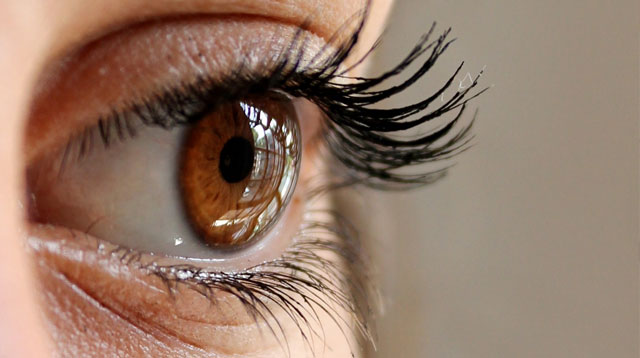
Surgical procedures
LASIK is performed in an outpatient surgical setting, with the patient reclining under a surgical device called an excimer laser. First, your eye is made numb with a few drops of topical anesthetic. An eyelid holder, called a speculum, is placed between the eyelids to keep them open and prevent you from blinking. A suction ring placed on your eye lifts and flattens the cornea and prevents your eye from moving. You may feel pressure from the eyelid holder and suction ring, similar to a finger pressed firmly on your eyelid. From the time the suction ring is placed on your eye until it is removed, vision appears dim or goes black.
The surgeon then creates a hinged flap of paper-thin corneal tissue using an automated microsurgical device, either a laser or an instrument called a microkeratome blade. The corneal flap is lifted and folded back. The excimer laser, which has been preprogrammed with measurements specifically for your eye, is then centered above your eye. You will look at a special pinpoint of light (called a fixation light or target light) while the laser sculpts the exposed corneal tissue. After the laser has reshaped your cornea, the surgeon replaces the flap in position and smoothes the edges without placing any stitches. Your corneal flap will never adhere to the surface of the eye with quite the same strength it did prior to the surgery, so there is a rare but possible risk of the flap becoming displaced with sufficient force. After surgery, you should avoid rubbing the eye, which may cause the flap to shift out of place. To help protect the cornea as it heals, the surgeon may place a transparent protective shield over your eye. The shield may only be needed at night to prevent you from rubbing the eye during sleep.
You should arrange to have someone take you home after the surgery. Taking a nap or simply relaxing for the rest of the day is recommended. Usually your vision will be clear enough to drive to the follow-up visit the next day. The doctor may advise waiting several days before you resume a normal work schedule. The doctor should advise you on how long you should wait before resuming sports, exercise, or strenuous activity. After LASIK surgery, you will receive eyedrops to help prevent infection and inflammation during the healing process and to alleviate dryness. You must be sure to follow any instructions from your doctor and return for follow-up appointments as directed. Bear in mind that it may take three to six months for vision to stabilize completely. All LASIK patients should ask their doctors for a record of their pre-LASIK correction prescription. This information is important for you to give to the doctor who may perform a future cataract surgery or other eye disease diagnosis and treatment.
Frequently Asked Questions ?
Many patients comment on how surprised they are of not feeling pain with their LASIK surgery. Anesthetic drops are used to fully numb the eye before LASIK eye surgery begins; during the laser correction you may feel a light pressure sensation around your eye. Prior to surgery you may be given a mild sedative to help you relax. After your laser eye surgery, your eye may feel a bit irritated for a few hours, but most patients are quite comfortable after taking a short nap. You will be prescribed drops for your eyes to provide comfort and healing in the days following your surgery.
There are some minimal restrictions in the first weeks following laser surgery, but many LASIK patients are able to resume normal activities the following day! Vision corrective results from LASIK surgery are typically very rapid and many patients are able to see clearly 24-48 hours after surgery. Further vision improvement may continue over several months. Your doctor will recommend avoiding certain activities, like swimming or contact sports for several weeks.
Yes. Most patients find it much more convenient to have both eyes treated on the same day.





©Microclouds 2018 . All rights reserved By Ivision Eye Hospitals.



